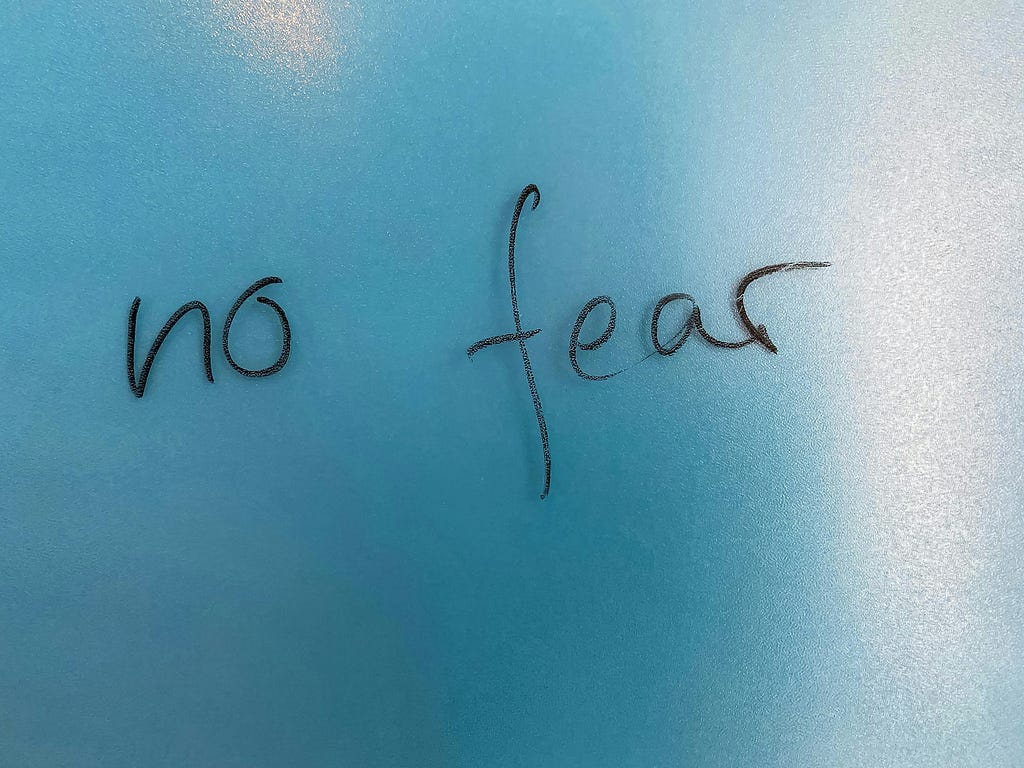Tips, tricks and insights. Stories from content designers who’ve made the leap

Our meet-ups are always buzzing with wonderful conversations. Recently, one topic has been coming up more often: transitioning into content design.
It’s clear that many of us are curious about making this shift — and for good reason. After all, who wouldn’t want to become a content designer? Content design offers a blend of creativity and strategy, allowing us to make a real impact.
When I started in content design, the field was relatively unknown, and I found myself figuring things out along the way. But rather than just sharing my story, I reached out to others who’ve made the leap into content design. Their experiences at different stages of their journeys offer a wealth of insights for anyone considering a similar move.
What motivates a shift into content design?
So, what drives someone to shift into content design?
It’s an interesting question as the reasons for transitioning into content design are varied, but there’s a common thread:
a desire to find work that’s both meaningful and aligned with personal passions.
Take Andy, for example, who’s a content designer who transitioned into content design after years of being interested in language, systems, and psychology but never finding a role that combined these interests.
After a career break, he returned to work and discovered content design by chance.
“The diversity of the role was mind-blowing and fascinating,” he reflects, marking the start of his journey.
Others, like J, made the shift out of necessity. Burned out from a demanding communications role, J was seeking a more fulfilling career.
“I wanted to help make the internet a better place,” they share, highlighting a common motivation: the drive to make a tangible impact.
Michelle, who’s a content design lead, has a different story. She wasn’t actively seeking a content design role but found it while exploring new opportunities. With a background in writing and freelance web design, content design seemed like a perfect fit.
“I wasn’t looking to get into content design,” she admits, “but I was looking for something different.”
This sense of finding the right role almost by accident is something many content designers can relate to.
For Laura, a fellow content designer, the appeal of content design lies in its purpose. After years in SEO, she was drawn to creating content that benefits users, not just search engines.
“The idea of making content changes to help the user really appealed to me,” Laura says.
This shift allowed her to align her work with her values, a sentiment echoed by Emma, who left a sales-driven marketing career for something more meaningful.

Resources and strategies that helped along the way
Making the leap into content design involves more than just a career change; it requires equipping yourself with the right tools and knowledge. Many have shared the resources and strategies that were instrumental in their journeys.
Content Design, second edition, by Sarah Winters and Rachel Edwards book, is frequently mentioned as a foundational resource. However, as Andy notes, the hands-on experience proved even more valuable.
“Talking with the content design team and sharing ideas was invaluable,” he says.
Seeing the principles in action often has a greater impact than reading about them.
Networking and engaging with the content design community were also crucial. Michelle emphasises the importance of connecting with others in the field. Whether through Slack groups (we are content club), LinkedIn, or webinars, talking to those already doing the work provided guidance and reassurance.
“Talking with others who are actually doing the work was immensely valuable,” she says.
Investing in education can also be a wise move. Laura chose to get a certification in content design through the UX Design Institute, which not only taught her new skills but also validated her existing knowledge.
“It reassured me that many of my self-taught skills were still best practice,” she notes.
Hannah, who’s a principal content designer, highlights the benefits of working alongside seasoned professionals. In her client-side role at a charity, she collaborated with a UX agency and observed content designers in action.
“Seeing content designers spend hours refining a single page was eye-opening,” she recalls.
This firsthand experience helped her understand the depth and detail involved in content design.
Mark, a content designer, attended Content Design London’s 12-week academy and found that gaining hands-on experience through real projects was incredibly beneficial.
“I gained further experience volunteering to help a local charity with their site,” he says, illustrating the importance of practical experience in building confidence and skill in content design.

Lessons learned: what we wish we’d known
Transitioning into content design comes with its share of surprises. Many were struck by how little of the job is about writing.
“The writing part is literally the tip of the iceberg,” says Andy, a sentiment shared by Ray, a senior content designer.
Content design is more about strategy, research, and problem-solving than just producing copy, offering both challenges and opportunities to broaden skills.
Lizzie, who has been in content for over a decade, advises patience, noting,
“It will take much longer than you think to establish a content design practice.”
Building something new requires persistence and resilience, especially within an existing organisation.
Hannah points out that content design rarely follows an ideal path.
“The ideal way of doing things is rarely the way you’ll actually do it,” she explains, highlighting the need for flexibility and adaptability.
Navigating organisational politics and managing stakeholders is part of the job, and perfection is elusive.
As Jamie puts it, “Everyone is having a messy old time of it. Everyone learns as they go.” This realistic view can set the right expectations for newcomers.

Advice for aspiring content designers
Those who’ve transitioned into content design agree on one thing: don’t go it alone. Andy suggests talking to people in the field to understand the various roles and environments.
“No two organisations have the same approach,” he notes, stressing how different workplaces shape your experience.
J advises being proactive in creating collaboration opportunities, warning that they won’t come automatically.
“It can get really lonely,” J adds, underscoring the need to build a supportive network.
Michelle’s advice centres on curiosity.
“Ask questions, a lot of questions,” she says, encouraging aspiring designers to reach out to experts.
She also suggests looking beyond big tech companies, noting, “There’s more to content design than building an app.”
Ray recommends diving into essential resources like the Government Digital Service (GDS) and NHS Service Manuals, which teach core principles that are valuable in any setting.
Meanwhile, Hannah emphasises developing non-writing skills like user research and stakeholder management.
“Content design is as much about communication and persuasion as it is about crafting content,” she adds.
Finally, Mark highlights the importance of embracing uncertainty.
“Trust your process and rely on user-centred practices,” he advises, as these will guide you through the inherent ambiguity of content design work.

Top tips and resources
- Connect with the community
Engage with other content designers through Slack groups, LinkedIn, and meetups. Learning from others’ experiences is invaluable. - Invest in education
Consider courses or certifications in content design, such as those offered by the UX Design Institute or Content Design London. - Hands-on experience
Volunteer or take on small projects to build your skills and confidence. - Read widely
Start with Sarah Winters and Rachel Edwards Content Design book and explore resources like the GDS and NHS Service Manuals for foundational principles. - Ask questions
Don’t be afraid to reach out to experts or peers. Most are happy to help or point you in the right direction. - Be patient and persistent
Building a career in content design takes time, so be patient and stay focused on your goals.

Embracing the Journey
Transitioning into content design is more than just a career change; it’s a journey of discovery. Emma, who left a marketing career that no longer aligned with her values, encourages others not to hesitate.
“I wish I hadn’t sat on the fence for so long,” she says. The path to becoming a content designer may be challenging, but it’s a journey well worth taking.
So, if you’re considering the leap, take the advice of those who’ve gone before: connect with others, invest in your education, and don’t be afraid to dive in. Content design is a field rich with opportunities for those passionate about making a difference — your journey could start today.
Enjoyed this?
Check out my other articles on design.
- Designing for a better future
- Embracing circular design for sustainability
- Why designers should become leaders
I hope you enjoyed this article, and if it helped you out, don’t forget to leave a clap or two or drop a comment. You can connect with me on LinkedIn, Medium and BlueSky.
Your guide to becoming a content designer was originally published in UX Planet on Medium, where people are continuing the conversation by highlighting and responding to this story.